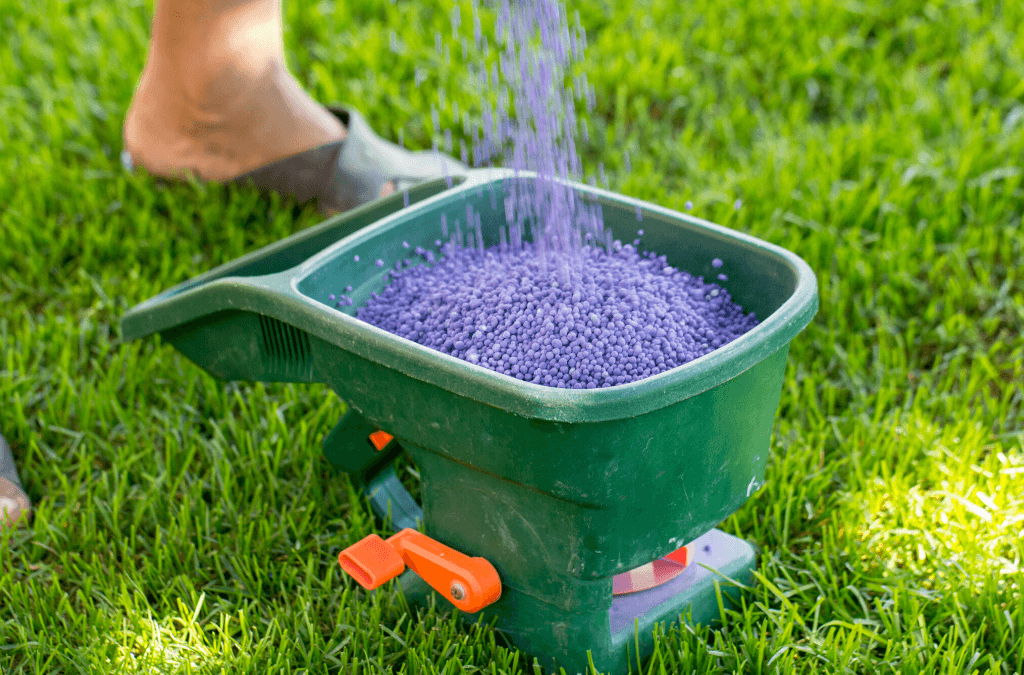How To Choose The Right Lawn Fertilizer For Summer
The process of choosing the right lawn fertilizer for summer includes understanding your lawn’s needs, choosing the right type of fertilizer, looking for the right nutrient ratio, considering slow-release fertilizers, avoiding high-phosphorus fertilizers, and more.
A lush, green lawn is a sight to behold and a point of pride for homeowners.
However, achieving and maintaining a healthy lawn requires more than just regular mowing and watering.
Fertilization is a crucial aspect of lawn care, especially during the summer months when the heat can stress grass and deplete soil nutrients.
Choosing the right lawn fertilizer can be overwhelming with so many options available on the market.
In this article, we will explore some tips on how to select the right lawn fertilizer for summer.
How To Choose The Right Lawn Fertilizer For Summer
1. Understand Your Lawn’s Needs
Different lawns have varying needs, depending on factors such as soil type, grass species, climate, and the level of foot traffic.
Before choosing a fertilizer, it’s crucial to understand your lawn’s needs. A soil test can provide valuable information about the nutrients present in your soil and the pH levels.
Based on the results, you can determine which nutrients your lawn needs and in what quantities.
- Related article: Setting a Lawn Fertilizer Schedule for Your Yard
2. Choose the Right Type of Fertilizer
Lawn fertilizers come in various types, including granular, liquid, organic, and synthetic. Each type has its advantages and disadvantages, so it’s essential to choose the right one for your lawn.
Granular fertilizers are easy to apply and provide long-lasting results. They are suitable for larger lawns but may require more effort to distribute evenly.
Liquid fertilizers are fast-acting and easy to apply but may require more frequent applications.
Organic fertilizers are made from natural sources and are ideal for improving soil health, but they may be more expensive than synthetic options.
3. Look for the Right Nutrient Ratio
Fertilizers are formulated with different nutrient ratios to address specific lawn needs.
The three primary macronutrients required by lawns are nitrogen, phosphorus, and potassium.
Nitrogen promotes healthy leaf growth, phosphorus supports root development, and potassium enhances the plant’s resistance to stress.
The ideal nutrient ratio depends on your lawn’s needs and the season. In summer, a fertilizer with a higher nitrogen content is recommended to promote healthy leaf growth.
4. Consider Slow-Release Fertilizers
Slow-release fertilizers are designed to release nutrients gradually over an extended period, providing long-lasting results.
They are ideal for busy homeowners who want to minimize the frequency of fertilizer applications.
Slow-release fertilizers also reduce the risk of fertilizer burn, a common problem with fast-acting fertilizers that can damage grass if applied too heavily.
5. Avoid High-Phosphorus Fertilizers
Phosphorus is essential for root development, but too much of it can harm the environment. In many states in the US, high-phosphorus fertilizers are banned or restricted to protect water quality.
Before purchasing a fertilizer, check your state’s regulations to ensure you are buying a product that complies with the law.
6. Consider Environmental Factors
When choosing a lawn fertilizer, it’s essential to consider the potential environmental impact.
Fertilizer runoff can pollute waterways and harm aquatic life. Look for fertilizers with slow-release formulas and low nitrogen levels to reduce the risk of runoff.
Avoid fertilizing before heavy rain, as this can cause fertilizer to leach into waterways.
Finally, consider using organic fertilizers, which are derived from natural sources and are less likely to harm the environment.
- You should also read: Lawn Fertilization: 5 Benefits Of Investing In Fertilization
7. Follow Application Instructions
Applying fertilizer correctly is crucial to achieve the desired results and avoid damaging your lawn.
Read the label carefully and follow the instructions regarding the amount and frequency of application.
Use a spreader to ensure even distribution of the fertilizer, and avoid overlapping or missing spots. Water the lawn after applying fertilizer to help the nutrients reach the roots.
In conclusion, a lush and healthy lawn requires proper care and maintenance, which includes fertilization, especially during the summer months.
When selecting a lawn fertilizer, it’s crucial to understand your lawn’s needs, choose the right type of fertilizer, and consider environmental factors.
The ideal nutrient ratio and slow-release fertilizers are recommended for summer, while high-phosphorus fertilizers should be avoided in states where they are banned or restricted.
Following the application instructions and using a spreader to distribute the fertilizer evenly can help achieve the desired results without damaging your lawn.
With these tips, homeowners can achieve a beautiful and healthy lawn that they can take pride in.
If you want to ensure that your lawn gets the proper care and maintenance it deserves, consider hiring Green Grounds Landscaping in Minnesota.
With our expertise in landscaping and lawn care, we can recommend the right lawn fertilizer for your summer needs, as well as provide other landscaping services in Minnesota to keep your yard looking its best.









